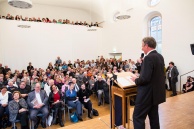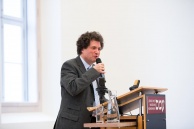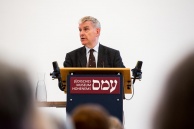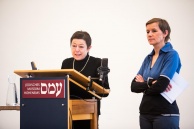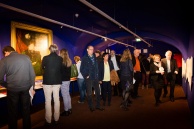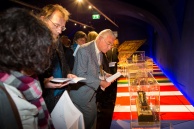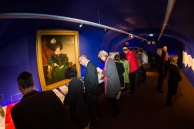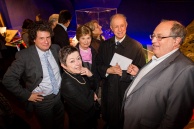Exhibition Poster
Design: Atelier Stecher
Jewish Museum Hohenems, March 25 - October 5, 2014
The First Europeans
Habsburg and Other Jews - A Wolrd Before 1914
Hundred years after the onset of World War I the European Union faces a severe crisis. The Jewish Museum Hohenems looks back onto the world of the “Habsburg Jews” and their experiences, their transnational networks and their mobility, their hopes for a European federation and their illusions about the Habsburg “commonwealth”.
The exhibition presents precious loans from museums and private collections in Europe and the US—and tells the story of merchants and carriers, inventions and white slavery, artists and salons, peddlers and scholars, spies and patriots. We unfold the panorama of an empire that perished, from the late Middle Ages to 1914. In the end more than 400 Jewish communities existed on the territories of the Habsburg monarchy, mirroring the diversity of the empire.
For long though Hohenems had been the only recognized Jewish community on what is Austrian territory today, apart from the once Hungarian Burgenland—until 1867, when the new constitution allowed Jews to enter society, and modern Anti-Semitism became the paranoid ideology of Europe. In this world before 1914, Jews belonged to the most active mediators between cultures and regions. Their mobility and their cross-border relations made them the dynamic element of European development. The members of these communities were as diverse as one can imagine. They were composed of monarchists and revolutionaries, of the pious and the enlightened, of rural as well as urban Jews, by poor individuals and successful ones, by traditionalists as well as fighters for equality and social justice, by feminists, and utopists. Yet what they all had in common was a pre-European reference system. Reflected in their biographies and in the objects that form their heritage are all aspects of a past, disappointed, and abused, yet—hundred years after the onset of the “European Civil War” —still
vibrant European hope.
A series of events with lectures and readings will further explore the subject of the exhibition.
Press
Catalog
The exhibition is accompanied by a richly illustrated English catalog with essays and object histories:
Felicitas Heimann-Jelinek/Michaela Feurstein-Prasser (Eds), The First Europeans. Habsburg and Other Jews — A World Before 1914 (English Edition)
Mandelbaum Verlag,Vienna 2014
With contributions by Fritz Backhaus, Friedrich Battenberg, Mark Gelber, Erik Petry, Diana Pinto, Joshua Teplitsky and others.
01
Introduction
Photo: Dietmar Walser (©Jewish Museum Hohenems)
02
Entry with view to the portait of Cäcilie von Eskeles
Photo: Dietmar Walser (©Jewish Museum Hohenems)
03
Lokomitive Austria, Vienna 1937
Photo: Dietmar Walser (©Jewish Museum Hohenems)
04
Photo: Dietmar Walser (©Jewish Museum Hohenems)
05
Photo: Dietmar Walser (©Jewish Museum Hohenems)
06
Torah Crown from Klausenburg, Cluj (Rumänien),Vienna, around 1855
Photo: Dietmar Walser (©Jewish Museum Hohenems)
07
Photo: Dietmar Walser (©Jewish Museum Hohenems)
08
Centerpiece shaped as Solomon’s Temple with the Queen of Sheba, Aachen, around 1880
Photo: Dietmar Walser (©Jewish Museum Hohenems)
Jewish Museum Hohenems, March 23, 2014, 11am
The First Europeans
Exhibition opening
01
Opeing in the crowed Salomon Sulzer Saal
Photo: Dietmar Walser (©Jewish Museum Hohenems)
02
Museum Director Hanno Loewy
Photo: Dietmar Walser (©Jewish Museum Hohenems)
03
Anton Pelinka giving the opening speech
Photo: Dietmar Walser (©Jewish Museum Hohenems)
04
Introduction to the exhibition by F. Heimann-Jelinek and M. Feurstein-Prasser
Photo: Dietmar Walser (©Jewish Museum Hohenems)
05
Photo: Dietmar Walser (©Jewish Museum Hohenems)
06
Photo: Dietmar Walser (©Jewish Museum Hohenems)
07
Photo: Dietmar Walser (©Jewish Museum Hohenems)
08
Photo: Dietmar Walser (©Jewish Museum Hohenems)
09
Photo: Dietmar Walser (©Jewish Museum Hohenems)
_web.jpg)
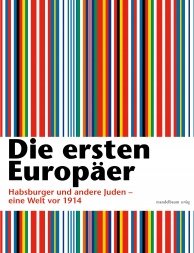
_web.jpg)
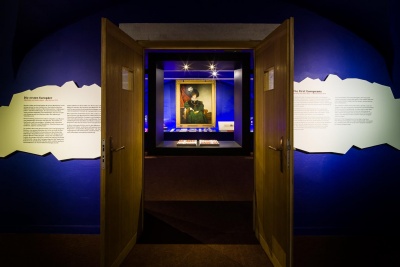
_web.jpg)

_web.jpg)
_web.jpg)
_web.jpg)
_web.jpg)
